With giant flatscreens transforming living rooms into home theaters, are modern soundbars designed to beam crisp, dynamic audio directly at the prime viewing seats like a cinema?
Soundbar audio dispersion varies – while basic models distribute sound widely all around, advanced directional technologies concentrate audio precisely towards centered listener locations for optimal immersion.
Let’s dive in to understand soundbar sound dispersion patterns in depth, and whether focused directionality or standard omnidirectional output works best based on room specifics and listener priorities.
It Depends on Soundbar Type and Tech
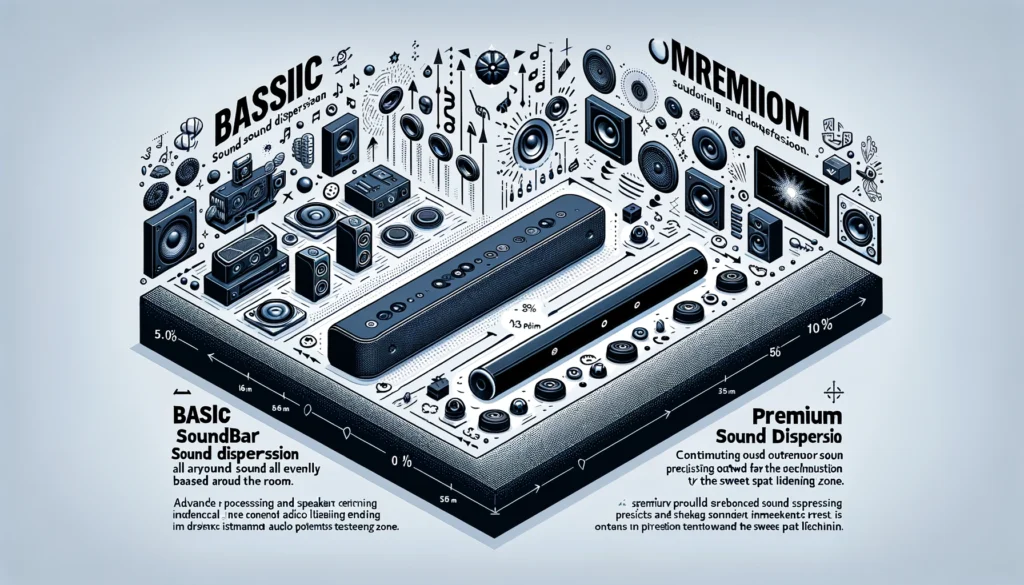
Basic soundbars without specialized directional audio technologies will disperse sound omnidirectionally all around the room rather than focusing it like a beam towards the centered seating area directly in front.
However, higher-end premium soundbars incorporate advanced processing and speaker designs to concentrate audio output precisely towards the sweet spot listening zone for heightened immersion.
Determine ideal sound dispersion needs based on room size/layout and performance priorities between simplicity versus ultimate enveloping surround sound.
Standard soundbars fire audio evenly in all directions – but directional models target it right at your ears.
Sound Dispersion from Soundbars
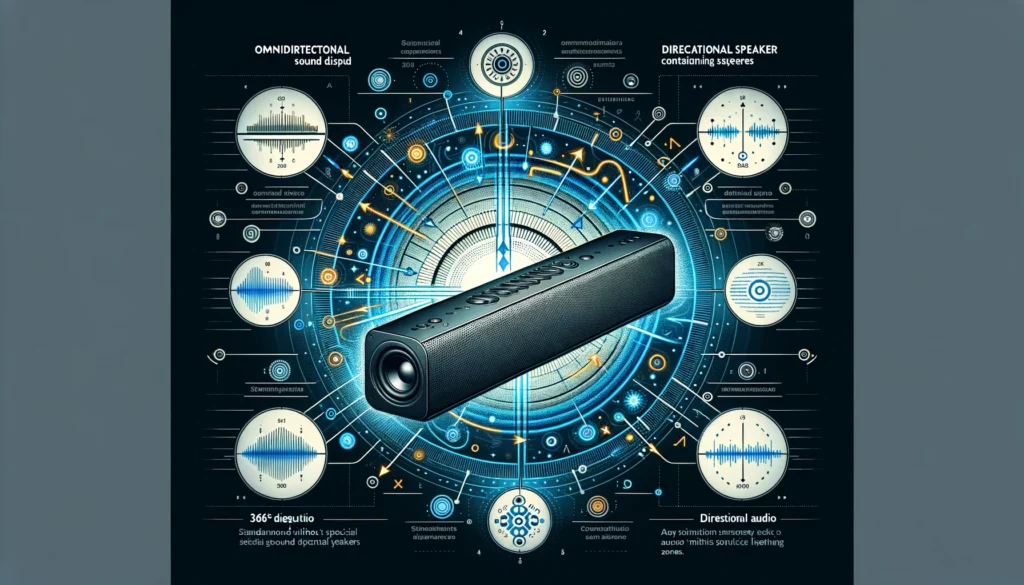
Sound dispersion refers to how audio spreads out and radiates from a speaker system. Omnidirectional speakers distribute sound equally in all directions over a 360-degree orientation.
Directional speakers concentrate audio to specific listening zones rather than dispersing it widely all around the speaker. For standard soundbars without special directional audio technologies built-in, their sound dispersal tends to be omnidirectional.
Basic soundbars utilize the width of their speaker cabinet to create a wider front soundstage for stereo or surround sound imaging. But the audio still radiates evenly sideways and upwards in addition to being projected forward.
This allows them to fill rooms effectively for listeners seated in different spots. But it also means they are not specifically focusing sound just towards the central seating sweet spot area directly facing the TV.
Directional Sound Technologies
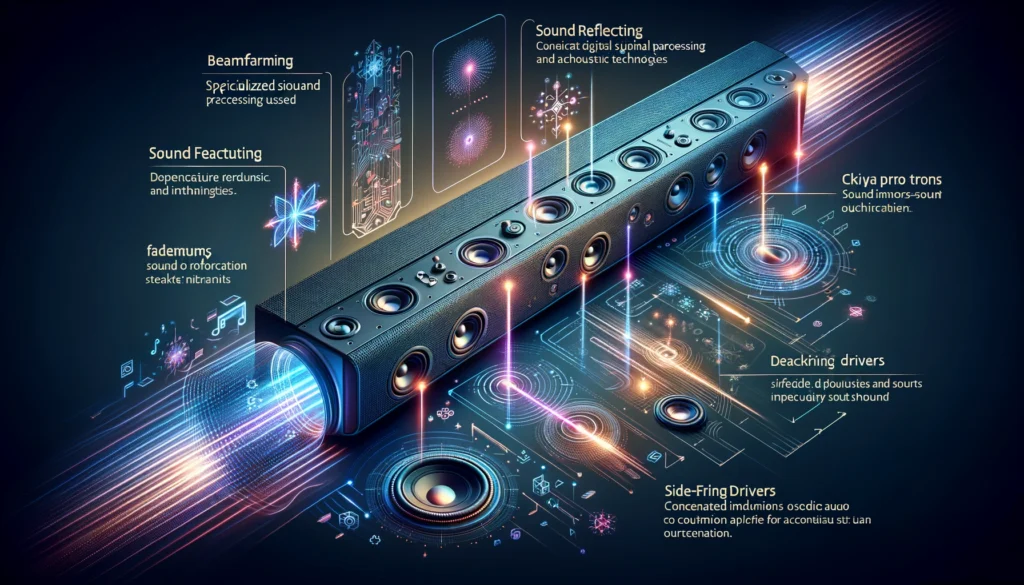
In contrast to basic soundbars, some higher-end models incorporate specialized directional sound technologies using advanced digital signal processing and speaker arrays.
Examples of these technologies include beamforming, sound reflectors, and even side-firing drivers with sound guided through acoustic tubes.
Beamforming utilizes DSP and precision drivers to electronically “steer” audio output directly towards the key listening area. Sound reflectors physically redirect and concentrate soundwaves to where people are most likely to be seated in a room.
Side-firing acoustic tubes guide audio more forward. Combinations of these approaches allow advanced soundbars to deliver a concentrated directional performance for maximum immersion.
Optimal Listening Area
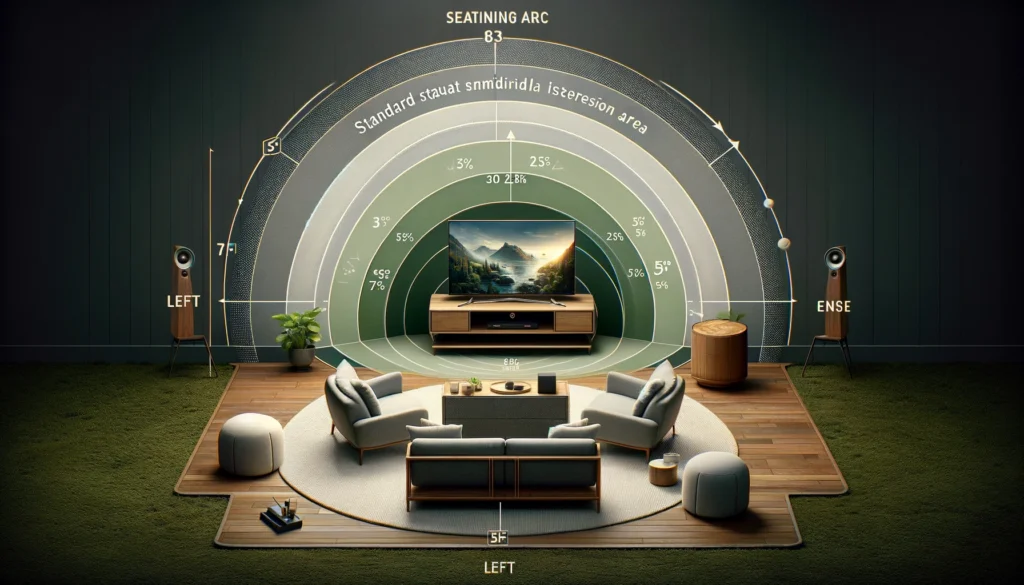
With standard omnidirectional soundbars, their balanced sound dispersion allows for reasonable audio quality within a wider arc spanning left, center and right seating spots a few feet from the TV.
However, the best “sweet spot” is still directly centered with stereo imaging that clearly separates left vs right channels.
In contrast, directional soundbar technologies restrict the ideal listening zone to one tight sweet spot area for the person seated in the middle front and center. Sitting too far left, right or off-axis degrades audio quality.
However, this focused sound creates incredible immersion for the centered listener.
Room Size and Layout Considerations
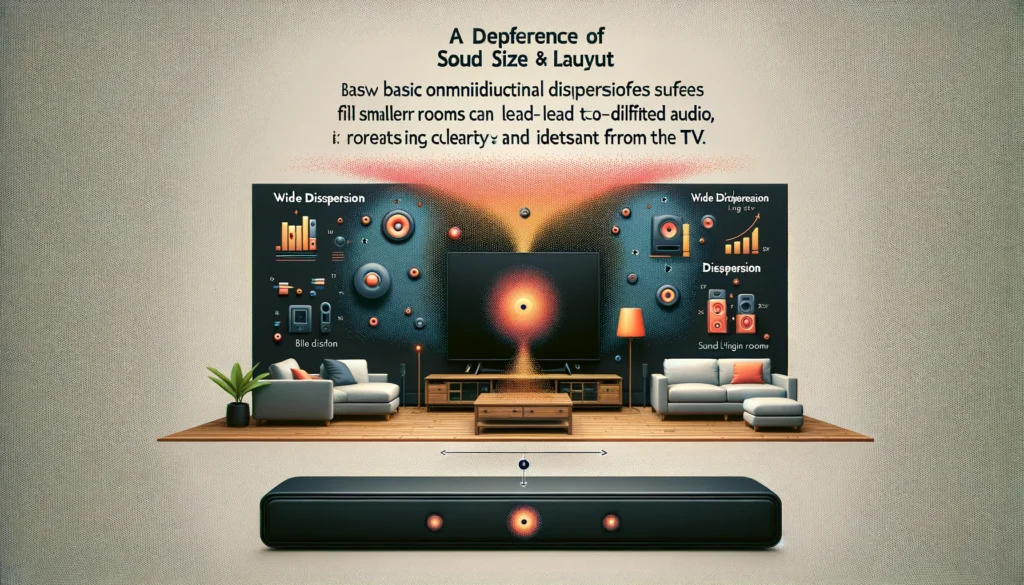
For smaller rooms like bedrooms, basic omnidirectional dispersion from regular soundbars suffices to fill the entire space effectively and satisfy multiple listeners.
But for larger living rooms, wide dispersion means audio can get diluted, reducing clarity and impact – especially for seats distant from the TV.
Here, directional soundbars excel due to concentrating audio output directly towards the prime seating zone even in big open layouts.
Instead of wasting acoustic energy dispersed widely across the room’s span, the sound is focused like a laser right where it needs to go. This helps deliver surround effects and punchy bass with precision.
However, directional concentration suits centrally-aligned TV/seating arrangements optimally. For off-center TV placements or listeners seated very far left/right, standard dispersion may actually provide a better balanced experience across all seats.
So room layout matters greatly. Carefully evaluate speaker needs based on factors like distance, room symmetry and number of viewers.
Impact on Immersive Audio Effects
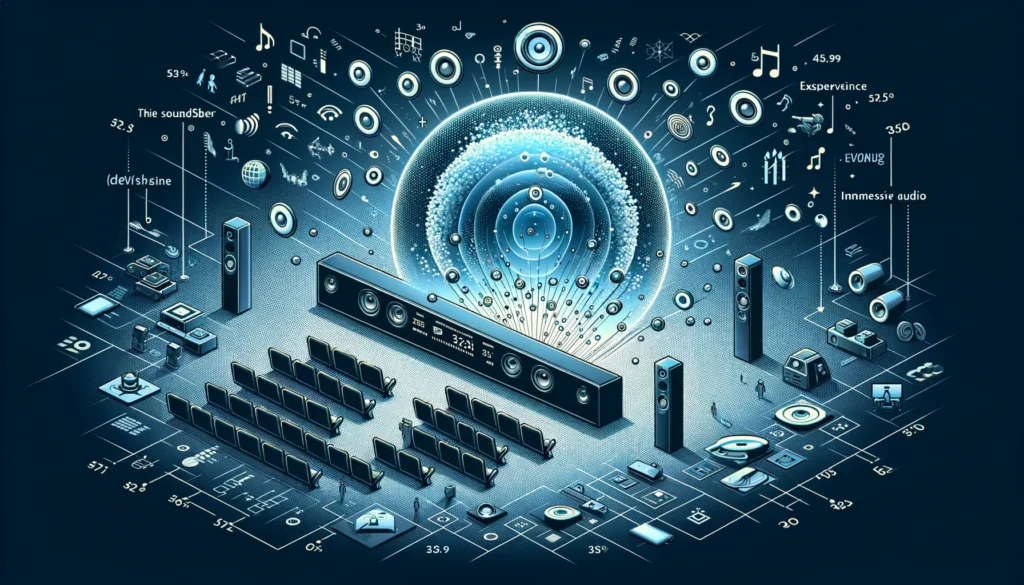
The goal behind immersive 3D audio formats like Dolby Atmos and DTS:X is to make sounds come at listeners from all directions, creating a bubble-like effect.
This requires audio projected from speakers actually placed all around, including behind and even above the seating zone.
However, full surround speaker setups are complex, so soundbars employ DSP tricks to simulate immersion instead. But standard wide dispersion undermines the effect since side/rear sounds don’t actually only originate from those directions.
Luckily, directional sound focusing helps anchor sounds virtually, enhancing the immersive experience.
For instance, many soundbars now incorporate dedicated upward-firing speakers for overhead effects. Making them directional prevents accompanying front speakers from washing this out.
Similarly, concentrating side-firing drivers directly at the seats augments virtual surround imaging. So directional sound technologies can boost soundbars’ immersive audio capabilities drastically.
Speaker Configuration Tradeoffs
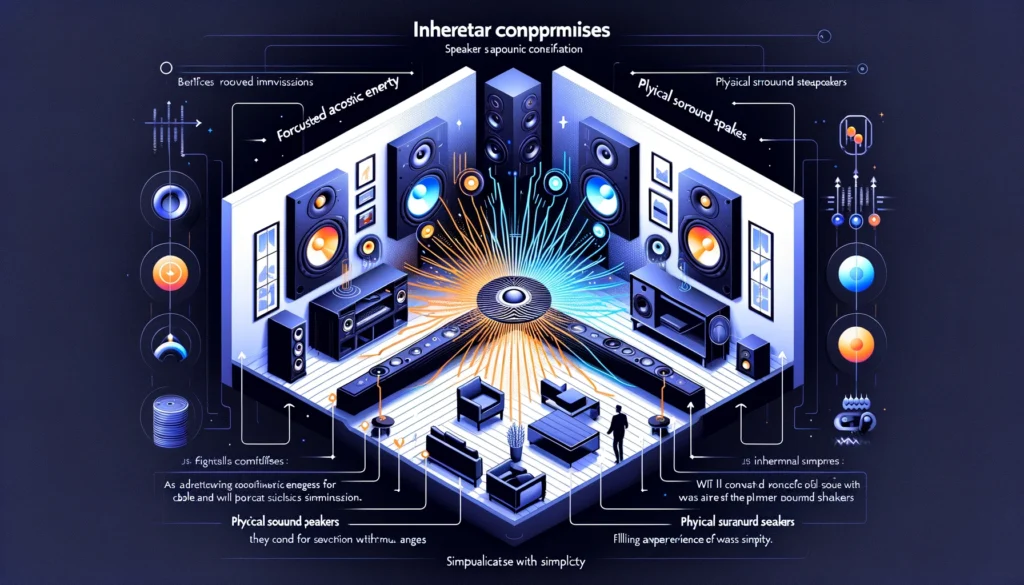
Directional soundbars may focus acoustic energy for pinpoint immersion. But no single box can replicate the experience of actual physical surround speakers filling a room with sound from all angles.
So there are inherent compromises.
The key advantage of directional soundbars is simplicity. All audio originates from one compact bar, requiring minimal cables/wires.
But the tradeoff is that no virtual processing can match the envelopment generated by actual side and rear speakers firing sound directly towards the sweet spot versus using acoustic tricks.
Setting up an advanced 7.1.4 surround system takes more effort but pays off via completely enveloping, multilayered sound with unmatched clarity. Soundbars take seconds to set up but make do with just simulated effects.
Choose based on room constraints, complexity tolerance and performance needs. For compact spaces, directional soundbars strike an excellent balance.
Dialogue Clarity Benefits
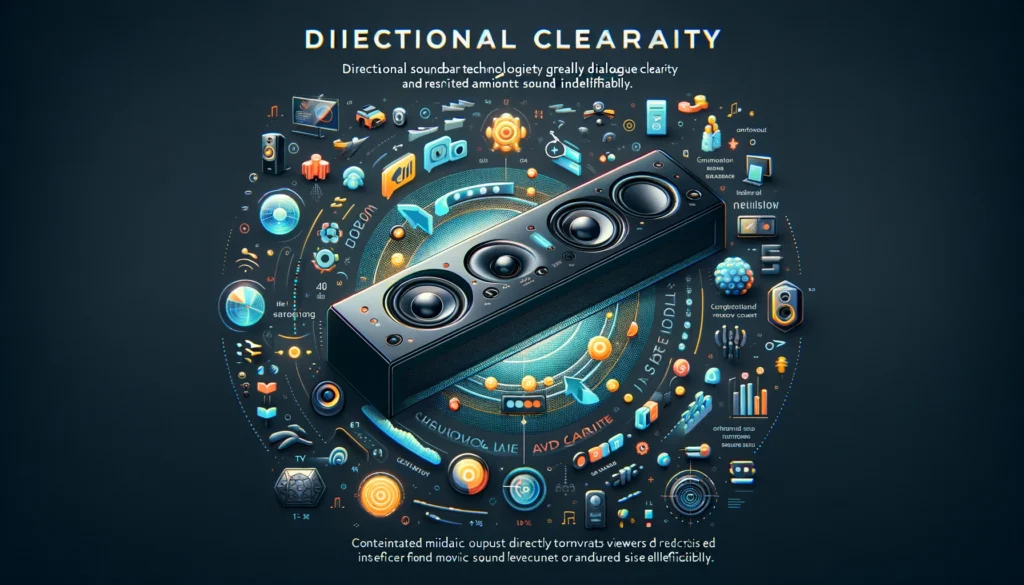
A key priority for TV, movies and other video content is clear, understandable dialogue and vocal reproduction. Even expensive surround systems can struggle here if elements like aggressive surround effects or boomy bass muddy the central vocal channel.
By concentrating audio output directly towards viewers and restricting ambient sound dispersion, directional soundbar technologies greatly benefit midrange clarity and voice intelligibility.
LISTENERS ARE This allows viewers to comfortably hear every line of dialogue without getting drowned out by other flashy audio elements in a mix.
So while directional sound focusing enhances big spectacle moments with focused immersion, the more subtle benefit is letting subtle vocals shine through.
Even during loud, busy scenes the dialogue channel cuts through clearly and crisply thanks to centered energy right towards listener ears. This enhances the viewing experience tremendously over soundbars with muddy, indistinct voice reproduction.
Conclusion
In conclusion, basic soundbars emit omnidirectional audio to fill spaces, but directional technologies in premium models focus sound towards centered seating areas. This enhances immersion and clarity dramatically.
Evaluate room size and layout to determine ideal sound dispersion needs. For most setups, directional soundbars strike an excellent balance between performance and simplicity.
